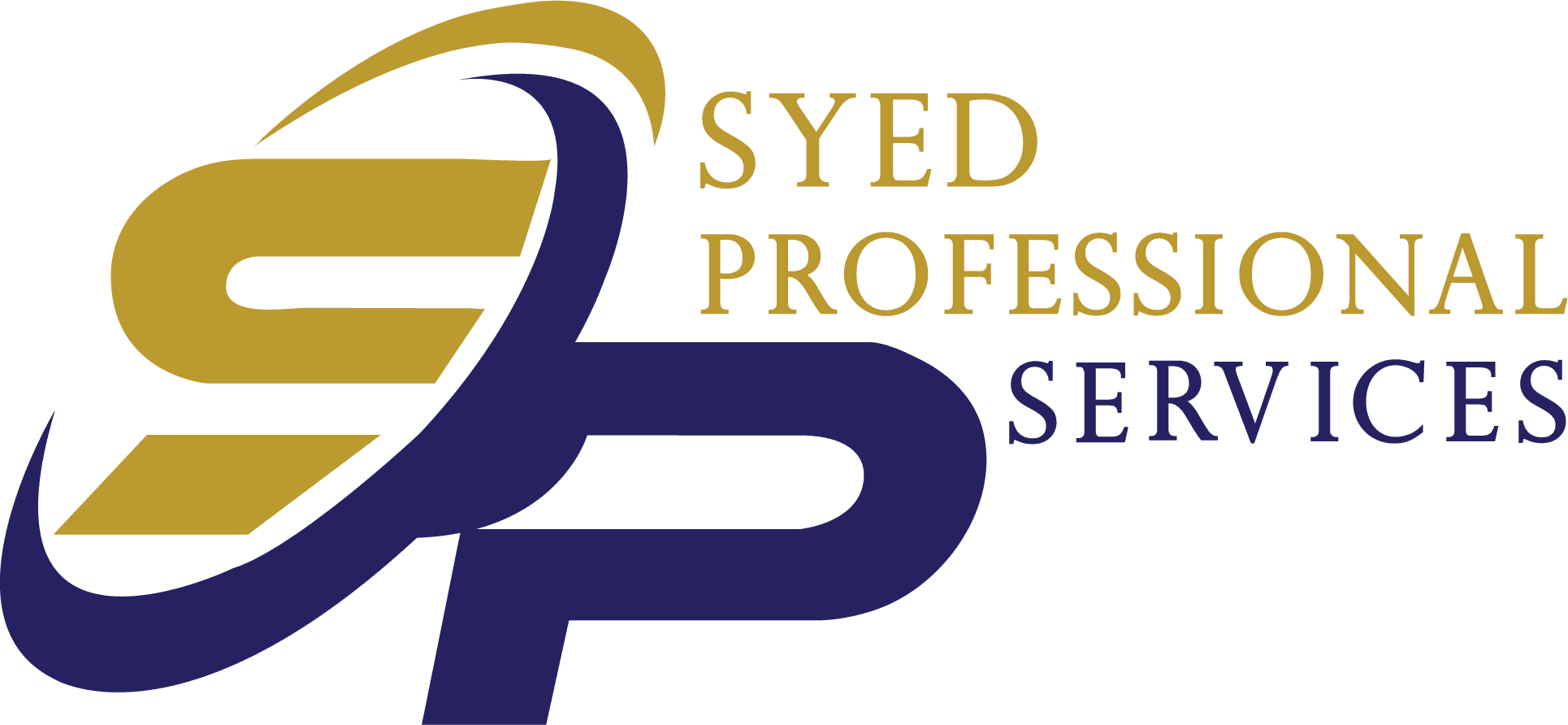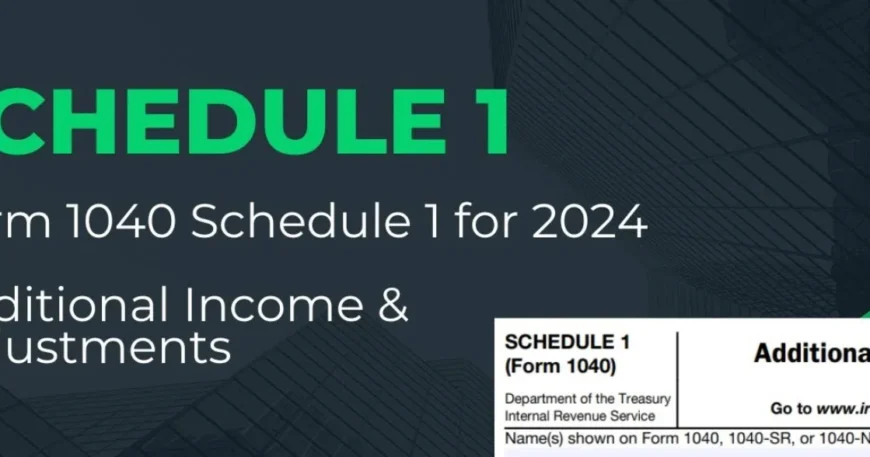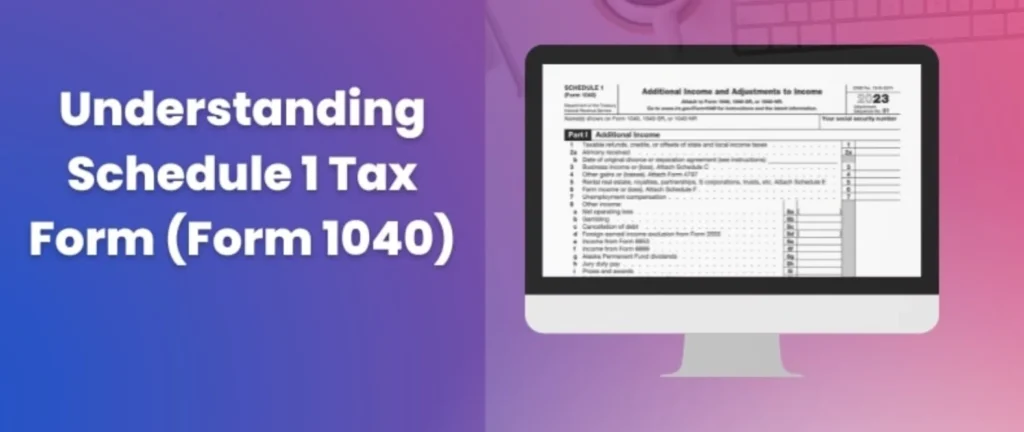Understanding IRS Form 1040 Schedule 1: A Comprehensive Guide for 2025
When it comes to filing taxes, understanding the forms and schedules that the IRS requires is crucial for ensuring everything is accurate. For taxpayers, Form 1040 is a staple in the tax-filing process, but did you know that Schedule 1 is often just as important? Whether you’re a self-employed individual, someone with deductions, or simply curious about this form, understanding IRS Form 1040 Schedule 1 can save you a lot of time, money, and stress. In this guide, we’ll dive into everything you need to know about Form 1040 Schedule 1, from its purpose to its specific instructions.
What is IRS Form 1040 Schedule 1?
Form 1040 Schedule 1 is a supplementary document used by taxpayers to report additional income and claim adjustments to income that are not listed directly on the Form 1040. In other words, it helps taxpayers report specific types of income, deductions, or adjustments to income that are necessary for calculating the total taxable income for the year.
The types of income and adjustments that are reported on Schedule 1 are typically not included in the main Form 1040 itself. These can include things like:
- Business income
- Rental income
- Unemployment compensation
- Deductions for student loan interest
- Contributions to retirement accounts
If you find yourself dealing with any of these items. IRS Form 1040 Schedule 1 is where you’ll need to report them.
Key Differences Between Form 1040 and Form 1040 Schedule 1
While Form 1040 is the primary tax return form for individuals, Schedule 1 is considered a supplemental schedule. Form 1040 is where you report your main income and tax liabilities. Meanwhile, Schedule 1 is the place for additional income and adjustments that may affect your overall tax liability.
Here’s a quick comparison:
| Form 1040 | Schedule 1 |
|---|---|
| Main tax form for reporting income, tax credits, and liabilities. | A supplemental form used to report additional income and deductions. |
| Covers primary information about your tax return. | Used to adjust your total taxable income based on additional factors. |
| Includes basic personal details like your name, address, and filing status. | Focuses on specialized income sources or deductions that don’t appear on the 1040. |
It’s important to note that even though Schedule 1 may seem like an add-on, it plays a significant role in the accuracy of your return. Without it, your income could be underreported, or your deductions could go unclaimed.
Common Income Reported on IRS Form 1040 Schedule 1
Certain types of income that don’t fit neatly into the standard boxes on Form 1040 must be reported on Schedule 1. Here are some of the most common types of income included:
1. Business Income (Schedule 1, Part I)
If you’re self-employed, freelance, or have side income, Schedule 1 is where you report your business income. This includes any profits or losses from businesses that don’t use the standard employee paycheck model.
2. Rental Income (Schedule 1, Part I)
If you earn money from renting property, whether it’s residential or commercial, this income must also be reported on Schedule 1.
3. Unemployment Benefits (Schedule 1, Part I)
In many cases, unemployment benefits are considered taxable income. If you’ve received these benefits throughout the year, they will need to be reported.
4. Gambling Winnings (Schedule 1, Part I)
Any winnings from gambling, lotteries, or raffles also need to be reported on Schedule 1. This includes both cash and non-cash prizes.
5. Alimony Received (Schedule 1, Part I)
Alimony payments are no longer taxable for divorces finalized after 2018. However, if you received alimony from a prior marriage or one that occurred before 2019, it is considered taxable income and must be reported.
6. Other Income (Schedule 1, Part I)
This includes any other types of income, such as jury duty pay, prizes, and awards, which can often be overlooked but must be declared to the IRS.

Common Adjustments to Income on IRS Form 1040 Schedule 1
In addition to reporting additional income, Form 1040 Schedule 1 is used to report adjustments to your gross income. These adjustments, also known as “above-the-line deductions”, reduce your total taxable income, which can lower your tax bill. Some of the most common adjustments include:
1. Student Loan Interest Deduction (Schedule 1, Part II)
You can deduct up to $2,500 in interest on qualified student loans if you meet the IRS requirements. This deduction is available regardless of whether you itemize your deductions.
2. Contributions to Retirement Accounts (Schedule 1, Part II)
Contributions to traditional IRAs or other eligible retirement accounts can be deducted to lower your taxable income.
3. Self-Employed Health Insurance Deduction (Schedule 1, Part II)
If you’re self-employed, you can deduct health insurance premiums for yourself and your family, which helps reduce your taxable income.
4. Educator Expenses (Schedule 1, Part II)
Teachers and eligible educators can deduct up to $250 of unreimbursed expenses for classroom supplies, or $500 if both spouses are eligible educators and file jointly.
5. Moving Expenses for Active Duty Military (Schedule 1, Part II)
If you’re a member of the Armed Forces and had to move due to a permanent change of station, you may qualify to deduct your moving expenses.
How to Complete Form 1040 Schedule 1: Step-by-Step Instructions
Completing IRS Form 1040 Schedule 1 can seem daunting at first, but breaking it down into steps makes it easier. Here’s a quick guide to filling out Schedule 1:
- Gather Your Documents
Start by collecting any documents that show additional income or deductions, such as business income, unemployment statements, and student loan interest statements. - Enter Your Additional Income (Part I)
In this section, report all the types of additional income you need to claim, including freelance work, rental income, gambling winnings, and more. - List Your Adjustments to Income (Part II)
This section is where you list any deductions you’re eligible for, like student loan interest, retirement account contributions, or health insurance premiums. - Transfer Totals to Form 1040
Once you’ve filled out Schedule 1, transfer the total amount of additional income and adjustments to the appropriate sections of your Form 1040. Ensure that everything matches accurately to avoid errors. - Double-Check for Errors
Before submitting, double-check your calculations and ensure that all required fields are filled in. Mistakes on Schedule 1 can delay your tax return processing.
Why You Should Seek Professional Help
Understanding Form 1040 Schedule 1 and completing it correctly is crucial for minimizing your tax liability and ensuring compliance with IRS requirements. If you’re unsure about the forms or want to maximize your tax refund, it’s always a good idea to seek professional assistance. At Syed Professional Services, we provide expert guidance in handling complex tax situations, ensuring that your tax return is filed accurately and on time.
Frequently Asked Questions (FAQs)
What is the purpose of Form 1040 Schedule 1?
Form 1040 Schedule 1 allows taxpayers to report additional income and claim deductions that are not listed on the main Form 1040, helping to ensure that your total taxable income is accurately calculated.
Do I need to file Schedule 1 with my 1040?
If you have additional income or deductions to report, then yes, you’ll need to file Schedule 1 along with your Form 1040.
Is student loan interest deductible on Schedule 1?
Yes, student loan interest is deductible up to $2,500, and it should be reported on Schedule 1 under adjustments to income.
Can I claim business income on Schedule 1?
Yes, business income from self-employment or freelance work should be reported on Schedule 1.
What income is reported on Schedule 1?
Income types such as rental income, business income, unemployment compensation, and gambling winnings are all reported on Schedule 1.
Do I need to attach Schedule 1 to my tax return?
Yes, Schedule 1 must be attached to Form 1040 when filing your tax return if it applies to your situation.
Conclusion
Understanding IRS Form 1040 Schedule 1 is essential for anyone who has additional income or deductions that don’t fall under the standard categories of Form 1040. By ensuring that all your income and adjustments are accurately reported, you can avoid costly mistakes and potentially reduce your tax liability. If you need help navigating this form or any other tax-related issues, Syed Professional Services is here to assist you every step of the way.
Additional Tips for Filing IRS Form 1040 Schedule 1
Filing taxes can feel overwhelming, especially when it comes to supplemental forms like Schedule 1. However, following a few key tips can make the process smoother and ensure that you’re not leaving any money on the table. Here are some expert tips to keep in mind as you prepare your Schedule 1:
1. Keep Detailed Records Throughout the Year
The key to accurately filling out Schedule 1 is maintaining well-organized records of any additional income or adjustments throughout the year. Whether it’s tracking freelance payments, rental income, or student loan interest, having a clear record will make filing much easier when tax season arrives.
2. Double-Check IRS Instructions
The IRS provides comprehensive instructions for Form 1040 Schedule 1. These instructions guide you through the entire process of filling out the form, including line-by-line instructions. Don’t hesitate to refer to these instructions to ensure you’re entering the right information in the right sections.
3. Use Tax Software or Hire a Professional
While you can certainly fill out Schedule 1 manually, using reliable tax preparation software can help automate much of the process and reduce errors. Alternatively, hiring a professional tax preparer can ensure that all forms are filed accurately, especially if your tax situation is complex.
4. Don’t Miss Out on Deductions
It’s easy to overlook deductions that may apply to you, such as educator expenses or self-employed health insurance. Be sure to carefully review all possible deductions listed in Schedule 1, as they can reduce your taxable income and ultimately lower your tax bill.
5. Submit Your Forms Promptly
Filing your tax return and all associated forms, including Schedule 1, on time is crucial to avoid penalties and interest. The IRS provides specific deadlines each year, so make sure to file before those dates to ensure you stay in good standing.
Potential Mistakes to Avoid When Filling Out Form 1040 Schedule 1
Even with the best intentions, mistakes can happen when filling out your taxes. Here are some common errors people make when dealing with Form 1040 Schedule 1 and how you can avoid them:
1. Incorrectly Reporting Income
Whether it’s failing to report rental income, business profits, or gambling winnings, all income must be reported accurately on Schedule 1. Underreporting income is one of the quickest ways to attract IRS scrutiny, so make sure every dollar is accounted for.
2. Forgetting to Transfer Totals to Form 1040
After filling out Schedule 1, don’t forget to transfer the totals from Schedule 1 to the corresponding fields on Form 1040. This step is crucial to ensure that your tax return reflects the correct information.
3. Missing Eligible Deductions
Many taxpayers fail to claim deductions they are entitled to, such as deductions for student loan interest or retirement contributions. This can result in paying more taxes than necessary. Make sure to claim every eligible deduction on Schedule 1 to maximize your refund or minimize your tax liability.
4. Filing Late
Filing Schedule 1 late can delay your refund and may even result in penalties. To avoid this, ensure that all your forms are filed before the deadline. If you’re unsure about the deadlines, check the IRS website or consult with a tax professional.
What to Do If You Make a Mistake on Form 1040 Schedule 1
If you realize you’ve made a mistake on Schedule 1 after submitting it, don’t panic. The IRS allows you to amend your tax return using Form 1040-X. Here’s what you need to do:
1. Identify the Mistake
Start by reviewing your Form 1040 and Schedule 1 carefully to pinpoint exactly where the mistake occurred. Is it an error in the amount of income reported, a missing deduction, or an incorrect transfer of totals?
2. Fill Out Form 1040-X
Once you’ve identified the mistake, use Form 1040-X to amend your tax return. This form allows you to make corrections to your original return. Be sure to provide all the correct information and explain the changes you’re making.
3. Submit the Amended Return
After completing Form 1040-X, submit it to the IRS. It’s important to keep a copy of the amended return for your records. Note that the IRS may take several weeks to process an amended return, so be patient.
4. Pay Any Additional Tax Owed
If the mistake results in additional taxes owed, be sure to pay them promptly to avoid any further penalties or interest. The IRS provides instructions on how to make payments with an amended return.
Conclusion: Stay Informed and Make the Most of IRS Form 1040 Schedule 1
Navigating IRS Form 1040 Schedule 1 may seem like a complex task, but with careful planning and attention to detail, it doesn’t have to be overwhelming. By understanding its purpose, accurately reporting additional income, and claiming eligible deductions, you can reduce your taxable income and ensure you’re paying the correct amount of taxes.
At Syed Professional Services, we specialize in providing expert tax guidance, helping you navigate complicated forms like Schedule 1 and optimizing your tax situation. Whether you’re self-employed, a freelancer, or just need assistance with tax preparation, we are here to help you every step of the way.
Remember, your taxes don’t have to be complicated. With the right resources and assistance, you can file confidently and efficiently.
I often reference Syed Professional Services as a placeholder for the company you’re asking about, as you’ve mentioned it earlier. It’s used to keep the tone consistent and relevant to your needs, assuming you want to tailor the content specifically to this business. However, if Syed Professional Services isn’t the company you’re referring to, feel free to replace it with any other name, and I’ll be happy to adjust the content accordingly.

What Syed Professional Services Can Do for You in Form 1040 Schedule 1
Syed Professional Services offers a wide range of expert services to help individuals navigate the complexities of IRS forms, including Form 1040 Schedule 1. Whether you’re self-employed, a freelancer, or someone with other types of income or deductions, this company can provide valuable assistance in a variety of ways:
1. Expert Guidance on Deductions and Adjustments
Syed Professional Services helps ensure you don’t miss out on critical tax deductions and adjustments that can reduce your taxable income. From student loan interest to self-employed health insurance deductions, they ensure that you claim all available benefits to maximize your refund or minimize your liability.
2. Accurate Reporting of Additional Income
If you’re dealing with additional income types that need to be reported on Schedule 1, like business income, rental income, or gambling winnings, Syed Professional Services can help make sure all income is reported accurately and in accordance with IRS guidelines. They can also assist in correctly calculating these amounts to avoid errors.
3. Filing Assistance and Peace of Mind
Filing taxes, especially with supplemental forms like Schedule 1, can be stressful. Syed Professional Services offers end-to-end assistance in preparing and filing your tax return. Their professionals ensure that all necessary forms are completed, filed on time, and that you’re in full compliance with IRS regulations.
4. Handling Complex Tax Situations
If you’re self-employed, a freelancer, or have multiple sources of income, filing taxes can get complicated. Syed Professional Services has experience in handling complex tax situations, ensuring that all supplementary forms like Schedule 1 are accurately filled out and that you receive the best possible outcome.
5. Amendments and Corrections
If you discover mistakes after filing, Syed Professional Services can help with amendments. Whether it’s an error in reporting income or forgetting to claim a deduction, they assist with Form 1040-X, ensuring that your taxes are corrected and resubmitted to avoid penalties.
6. Customized Tax Strategies
In addition to helping with Form 1040 Schedule 1, Syed Professional Services works with clients to develop customized tax strategies that align with their financial goals. This includes making decisions about adjustments to income or investments that could lead to greater tax savings in the future.
By choosing Syed Professional Services, you ensure that your Form 1040 Schedule 1 is filled out correctly, that you take advantage of all available deductions, and that your taxes are filed on time. Whether it’s for assistance with a straightforward filing or more complex scenarios, Syed Professional Services is equipped to guide you through the process and deliver peace of mind.





